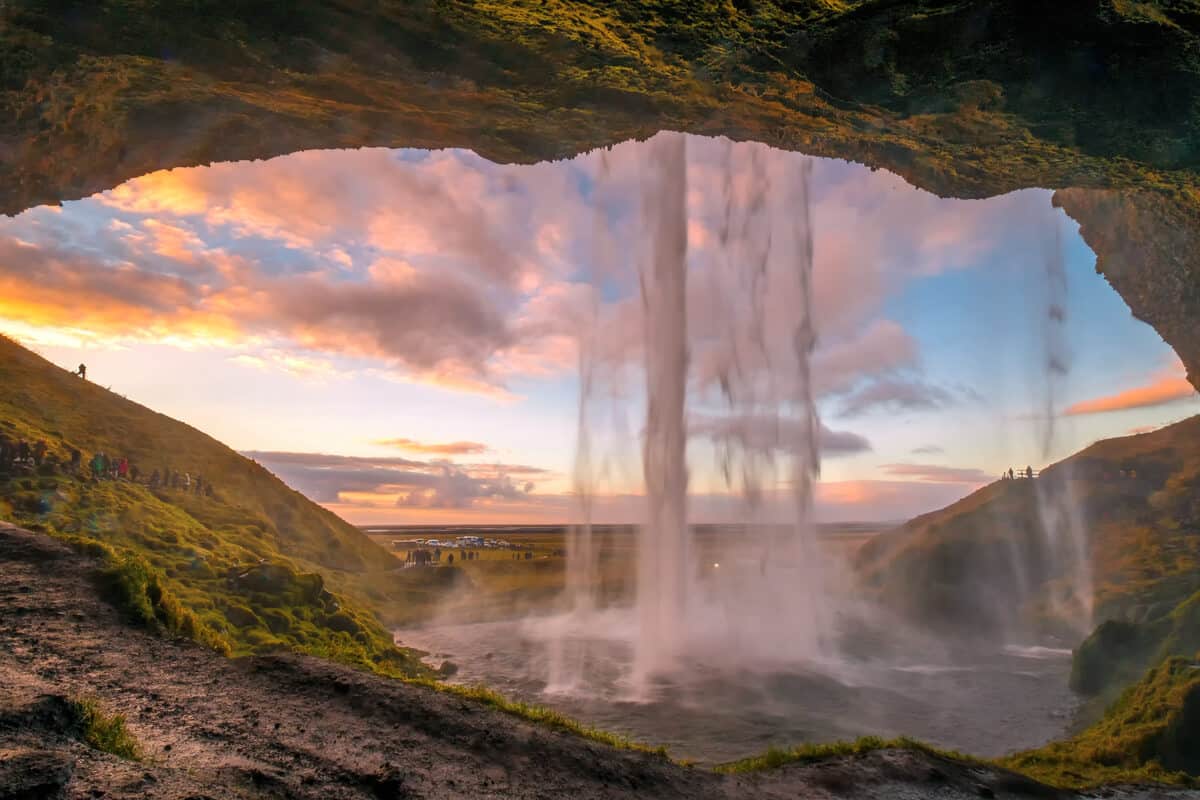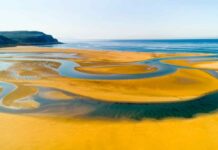January in Iceland offers a unique blend of breathtaking landscapes, cultural experiences, and winter activities that make it a perfect destination for adventurous travelers. From witnessing the mesmerizing northern lights to exploring the vibrant city of Reykjavik, there’s no shortage of things to do in Iceland in January.
What is Iceland Like in January?
Visiting Iceland in January is like stepping into a winter wonderland. The landscape is covered in snow, creating a magical backdrop for all your adventures. The weather in Iceland in January can be quite cold, with temperatures ranging from -1°C to 4°C (30°F to 39°F).
It’s essential to dress warmly, as the wind chill can make it feel much colder. The temperature in Iceland in January might surprise you, but with the right clothing, you can comfortably enjoy the outdoors.

Pros of Visiting Iceland in January
- Northern Lights Viewing: January offers long nights, making it an excellent time to see the northern lights.
- Winter Wonderland Scenery: The snow-covered landscapes are breathtaking and provide unique photo opportunities.
- Fewer Tourists: January is off-peak season, so popular attractions are less crowded.
- Unique Activities: Winter-specific activities like ice caving, glacier hiking, and snowmobiling are available.
- Festivals and Events: Experience local culture through events like Þorrablót, a traditional midwinter festival.
- Blue Lagoon Experience: The contrast of warm geothermal waters and cold air at the Blue Lagoon is particularly enjoyable.
- Cheaper Accommodation: Off-season rates can make accommodation more affordable.
Cons of Visiting Iceland in January
- Limited Daylight: With only 4-5 hours of daylight, planning your activities requires careful scheduling.
- Cold Weather: Temperatures can be very cold, especially with wind chill, making outdoor activities challenging.
- Unpredictable Weather: Rapid changes in weather can affect travel plans and road conditions.
- Driving Hazards: Icy roads and poor visibility can make driving difficult and sometimes dangerous.
- Limited Accessibility: Some attractions and roads may be closed due to snow and ice.
- Higher Costs for Winter Activities: Specialized winter tours and activities can be more expensive.
- Essential Packing: You need to pack a lot of winter gear to stay warm and comfortable, which can be bulky and heavy.

Daylight in Iceland in January
One of the unique aspects of traveling to Iceland in January is the limited daylight. How many hours of daylight in Iceland in January? You can expect around 4-5 hours of daylight, with the sun rising around 11 AM and setting around 4 PM. This short window of light makes the days feel precious and adds to the mystical charm of the Icelandic winter.
Weather in Iceland in January
Iceland weather in January is unpredictable. You can experience everything from clear skies to snowstorms. The temperature in Iceland in January often hovers around freezing, but it’s the wind that can make it feel much colder. It’s crucial to be prepared for all types of weather, ensuring you have waterproof and windproof clothing.
Top Things to Do in Iceland in January
-
Chase the Northern Lights
One of the main reasons travelers visit Iceland in January is to see the northern lights. Iceland in January northern lights displays are frequent and spectacular due to the long nights. The best time to catch the northern lights in Iceland in January is between 9 PM and 2 AM. Joining a guided tour can increase your chances of seeing this natural wonder, as guides know the best spots and conditions for viewing.

-
Explore Reykjavik
Reykjavik in January is vibrant and bustling. The city is known for its cozy cafés, world-class restaurants, and cultural landmarks. Things to do in Reykjavik in January include visiting the Hallgrímskirkja church, exploring the Harpa Concert Hall, and soaking in the ambiance of the city’s lively nightlife.

-
Visit the Blue Lagoon
A trip to Iceland isn’t complete without a visit to the Blue Lagoon. This iconic geothermal spa is open year-round, including January. The contrast between the warm, milky-blue waters and the cold air is an unforgettable experience. The Blue Lagoon is conveniently located near Reykjavik, making it an easy day trip.

-
Golden Circle Tour
The Golden Circle is a must-see, even in winter. This popular route includes Þingvellir National Park, the Geysir geothermal area, and Gullfoss waterfall. Each site is stunning in its winter attire, offering a unique perspective compared to the summer months.

-
Ice Caving and Glacier Hiking
For the more adventurous, ice caving and glacier hiking are thrilling activities. The ice caves, formed by melting and refreezing glacier water, are a mesmerizing sight. Tours are available from various locations, including Reykjavik and the South Coast.

-
South Coast Adventure
The South Coast of Iceland is spectacular in January. Visit black sand beaches, majestic waterfalls like Skógafoss and Seljalandsfoss, and the charming village of Vik. The icy landscapes add a dramatic touch to the already stunning scenery.
-
Snowmobiling and Super Jeep Tours
For an adrenaline rush, consider snowmobiling on a glacier or taking a super jeep tour to remote areas inaccessible by regular vehicles. These tours offer a unique way to experience Iceland’s rugged beauty.

Practical Tips for Visiting Iceland in January
Packing Essentials
Packing for Iceland in January requires careful planning. Essential items include:
- Thermal layers: Base layers, insulated jackets, and waterproof outer layers.
- Accessories: Warm hats, gloves, scarves, and thermal socks.
- Footwear: Waterproof and insulated boots with good traction.
- Other items: A good camera for capturing the northern lights, a reusable water bottle, and power banks for your electronics.
Driving in Winter
If you plan to rent a car, be aware that driving in Iceland in January can be challenging due to icy roads and changing weather conditions. Ensure your rental car is equipped with winter tires, and always check the weather and road conditions before setting out.

Frequently Asked Questions
Is January a good time to travel to Iceland?
Yes, January is a great time to visit Iceland if you enjoy winter activities and want to see the northern lights. The landscapes are stunning, and there are fewer tourists compared to the summer months.
Will I see the northern lights in Iceland in January?
The chances are high, as January offers long nights ideal for northern lights viewing. However, sightings depend on solar activity and weather conditions.
Is the Blue Lagoon open in January?
Yes, the Blue Lagoon is open year-round, including January. It’s a perfect way to relax and warm up in the geothermal waters amidst the cold weather.
How many hours of light is there in Iceland in January?
In January, Iceland experiences about 4-5 hours of daylight. This short window of daylight contributes to the enchanting winter atmosphere.

A winter wonderland
Exploring Iceland in January provides an unparalleled winter experience. Whether you’re chasing the northern lights, soaking in hot springs, or exploring ice caves, the adventures are endless.
For those looking to explore further, consider reading about Iceland in October for fall activities or Iceland in June for summer adventures.
And if you’re planning a road trip, check out our comparative guide to campervan rentals in Iceland for the best options to suit your needs.
Enjoy your Icelandic winter adventure!


































